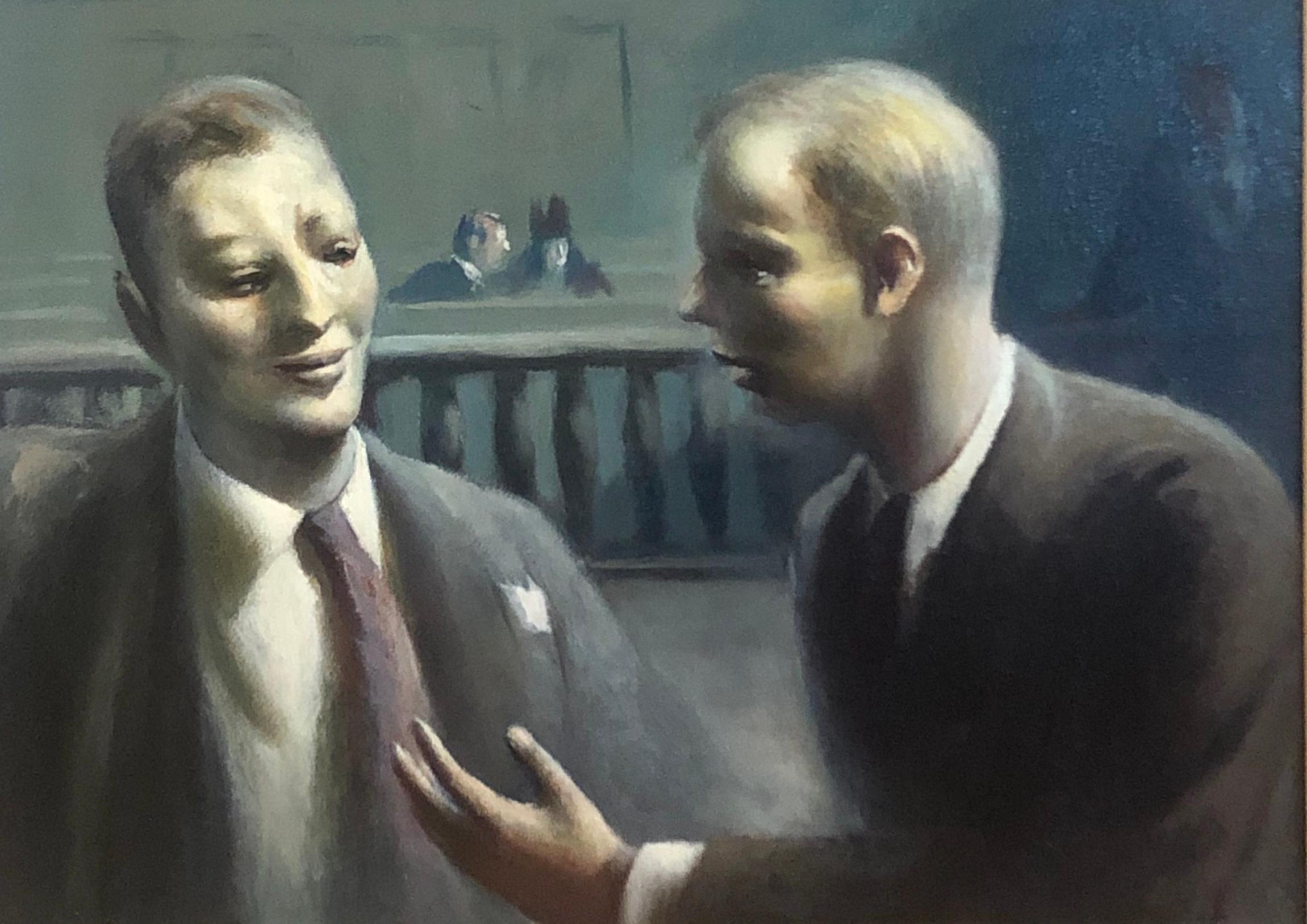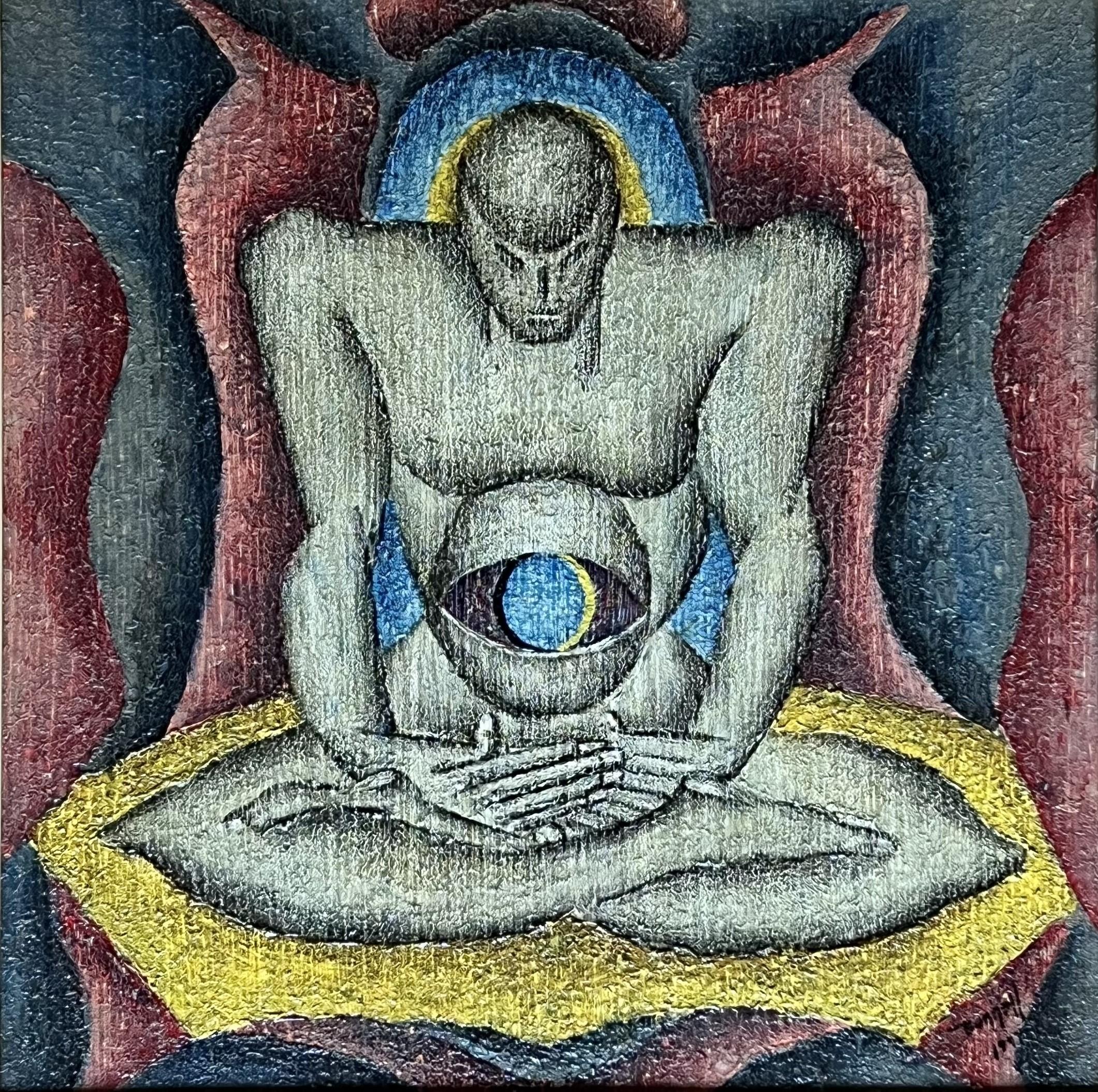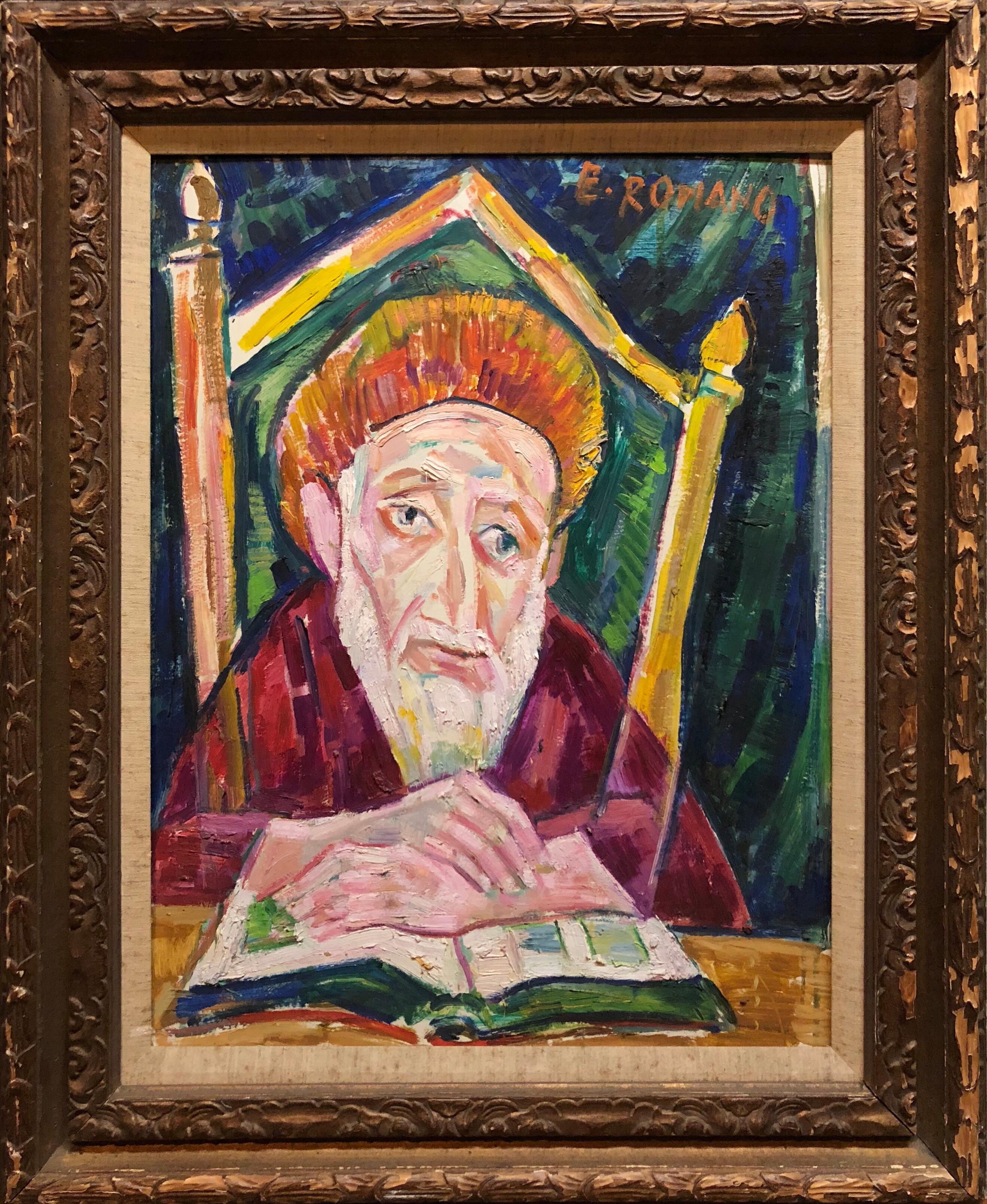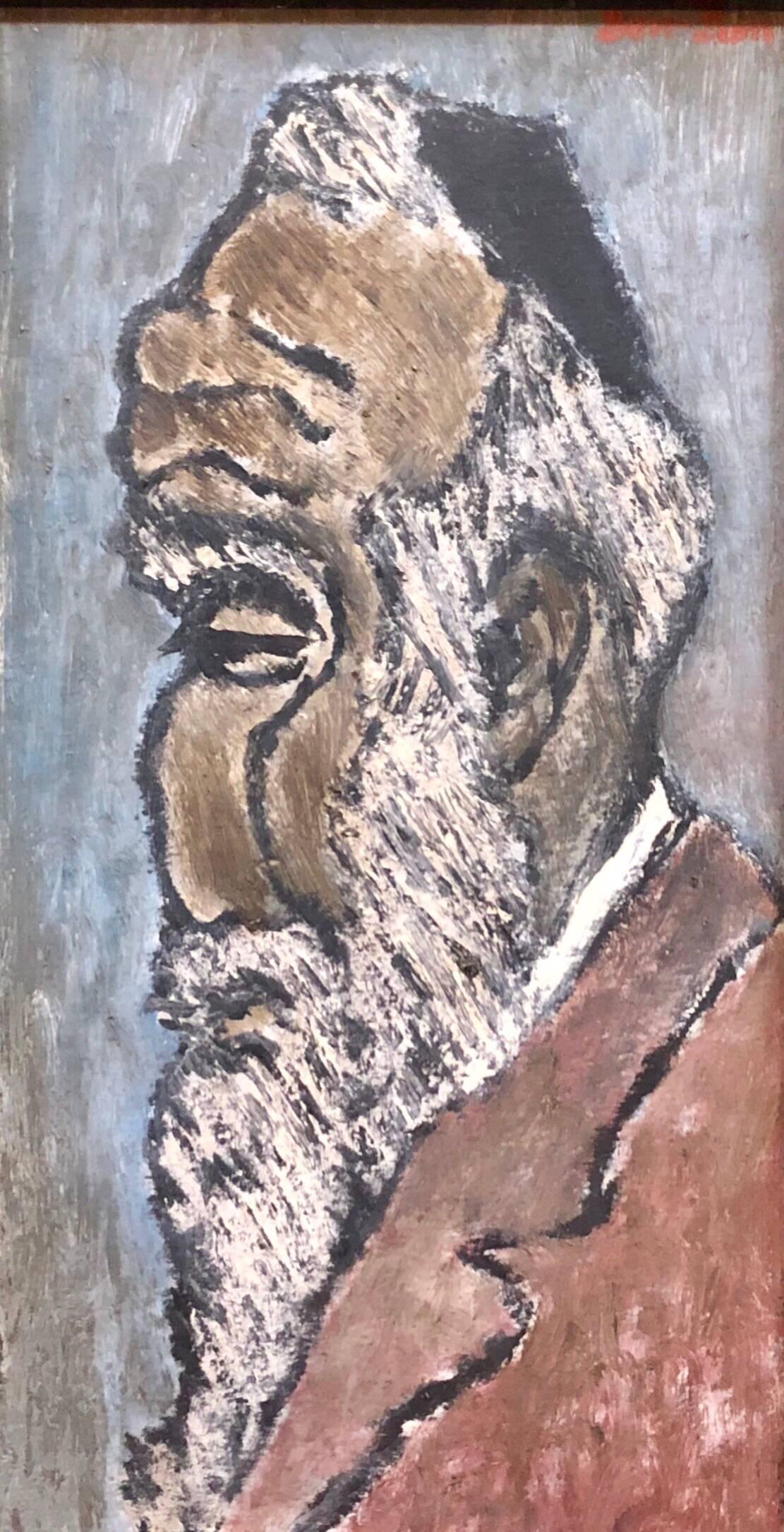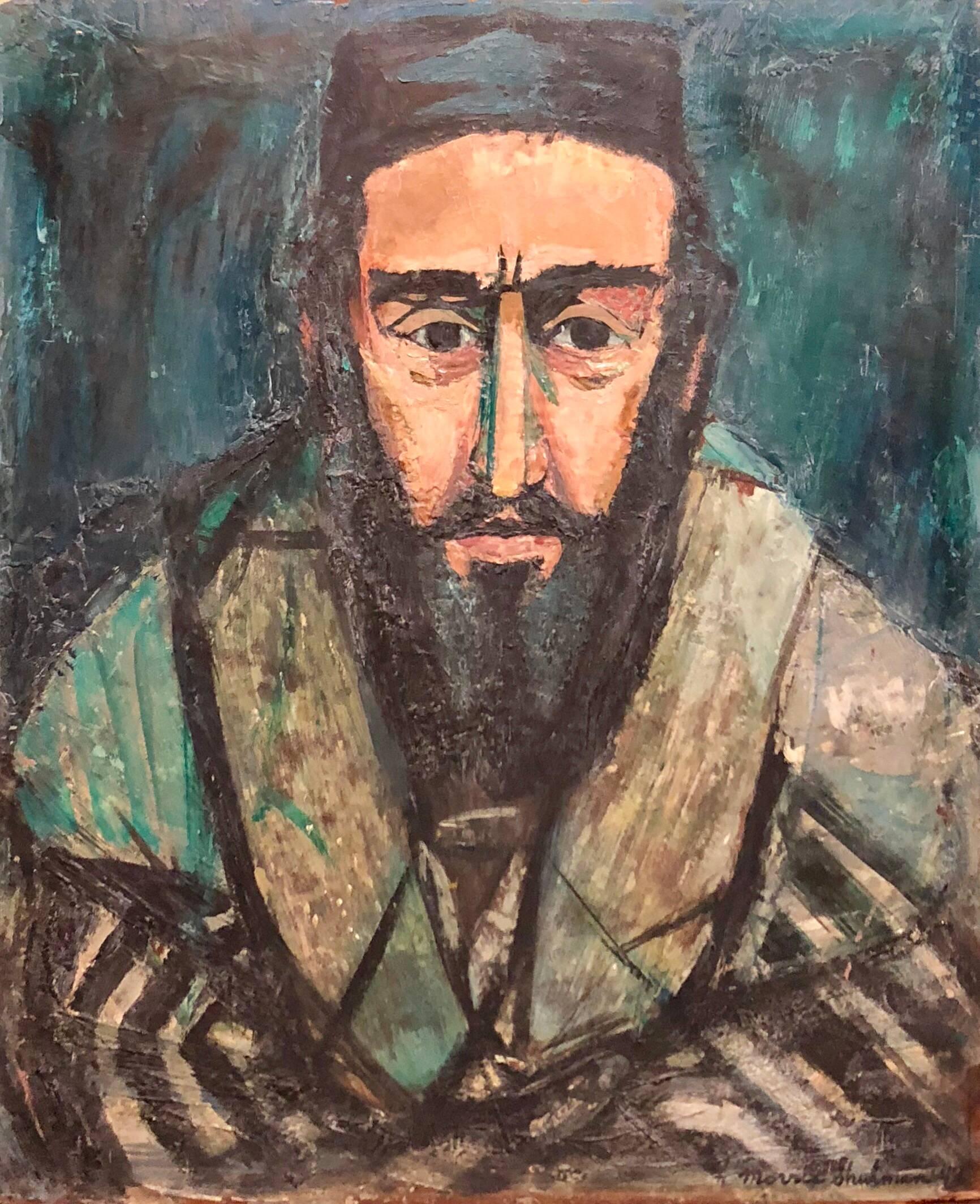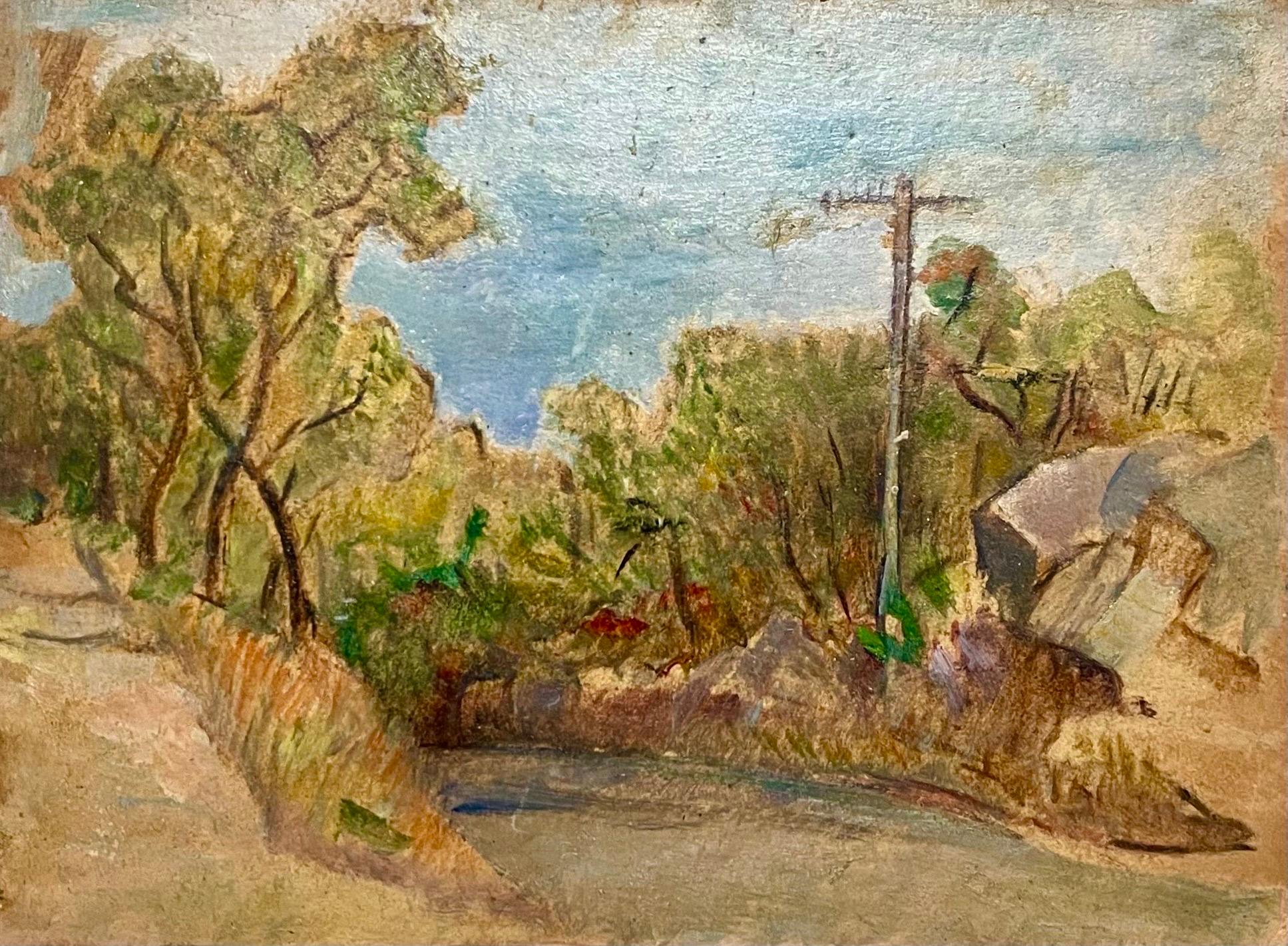Items Similar to Study for Subway Reading
Want more images or videos?
Request additional images or videos from the seller
Isabel BishopStudy for Subway Reading
About the Item
Isabel Bishop portrays two people riding on a crowded subway using bright color in her painting “Study for Subway Reading.”
- Creator:Isabel Bishop (1902-1988, American)
- Dimensions:Height: 26.63 in (67.65 cm)Width: 14.5 in (36.83 cm)
- Medium:
- Movement & Style:
- Period:
- Condition:
- Gallery Location:New York, NY
- Reference Number:1stDibs: LU11911757542
Isabel Bishop
Isabel Bishop (March 3, 1902 – February 19, 1988) was an American painter and graphic artist. Bishop studied under Kenneth Hayes Miller at the Art Students League of New York, where she would later become an instructor. She was most notable for her scenes of everyday life in Manhattan, as a member of the loosely-defined ‘Fourteenth Street School’ of artists, grouped in that precinct. Union Square features prominently in her work, which mainly depicts female figures. Bishop’s paintings won the American Academy of Arts and Letters Award, among other distinctions.
About the Seller
5.0
Recognized Seller
These prestigious sellers are industry leaders and represent the highest echelon for item quality and design.
Established in 1995
1stDibs seller since 2012
25 sales on 1stDibs
Typical response time: 3 hours
- ShippingRetrieving quote...Ships From: New York, NY
- Return PolicyA return for this item may be initiated within 3 days of delivery.
More From This SellerView All
- The SwingBy Will BarnetLocated in New York, NYSigned lower right: Will Barnet; on verso (photo available): Will Barnet / Aug 1963Category
Late 20th Century American Modern Figurative Paintings
MaterialsCanvas, Oil
- Street in Winter, 1949Located in New York, NYSigned lower right: PENNEY; on stretcher bar: Street in Winter JAMES / PENNEY 1949 (formerly City Street in Winter)Category
Mid-20th Century American Modern Figurative Paintings
MaterialsCanvas, Oil
- Summer at the PierBy Reginald MarshLocated in New York, NYSigned lower left: R. MARSHCategory
20th Century American Modern Figurative Paintings
MaterialsOil, Masonite
- Knucks DownBy Karl WitkowskiLocated in New York, NYSigned upper left: WitkowskiCategory
Late 19th Century American Modern Figurative Paintings
MaterialsOil, Canvas
- The Betrothal RingBy Warren B. DavisLocated in New York, NYSigned and dated lower left: WARREN B. DAVIS 06Category
Early 20th Century Modern Figurative Paintings
MaterialsCanvas, Oil
- Courtyard at NoonBy Robert SpencerLocated in New York, NYRobert Spencer paints a sun-drenched scene of figures moving about outside red clay buildings in his work entitled, “Courtyard at Noon.”Category
1910s Impressionist Figurative Paintings
MaterialsOil, Canvas
You May Also Like
- Guy Pene du Bois WPA American Modernism Realism NYC Scene Oil Lawyers in CourtBy Guy Pène Du BoisLocated in New York, NYGuy Pene du Bois' "Two Figures in Courtroom" is a WPA era American scene oil painting created in a realistic style. Modernism at its best The work is framed by Heydenryk. Pène du Bois descended from French immigrants who settled in Louisiana in 1738 and was raised in a Creole household. He was born in 1884 in Brooklyn, NY and first studied with William Merritt Chase at the New York School of Art and later continued his training with Robert Henri. Pène du Bois was greatly impressed with Henri's credo that "real life" was subject matter for art and throughout his life a realist philosophy informed his art as well as his parallel career, art criticism. In 1905, Pène du Bois made his first visit to Paris where he painted scenes of fashionable people in cafes rendered in the dark tonalities and impasto associated with the Ashcan School. By 1920, he had achieved his mature style, which was characterized by stylized, rounded, almost sculptural figures painted with invisible brushstrokes. The subjects of his paintings were often members of society whom he gently satirized. In 1924, Pène du Bois and his wife, Floy, left for France where they would remain until 1930. Returning to America showcases pictures the artist produced after this very productive period abroad. After five years of living in France, Pène du Bois was able to observe American life with fresh eyes. His work becomes more psychologically intense and less satirical. In Girl at Table a slender, blond is shown gazing at a small statue that she holds at arm's distance. The meaning is elusive, but a powerful sense of longing is evoked. Similarly, paintings such as Dramatic Moment and Jane are taut with unresolved dialogue. Both pictures depict mysterious interiors in which a lone woman anxiously awaits the denouement of a suspenseful scene. Other pictures, for example, Chess Tables, Washington Square and Bar, New Orleans, recall Pene du Bois's Ashcan origins in their depiction of urban entertainment. During this period, landscape becomes an important subject for Pène du Bois. Girl Sketching...Category
1930s American Modern Figurative Paintings
MaterialsPaper, Oil, Board
- Untitled (Transcendental Composition)By Charles Ragland BunnellLocated in Los Angeles, CAThis work is part of our exhibition - America Coast to Coast: Artists of the 1940s Untitled (Transcendental Composition), oil on board, 1947, oil on board, signed and dated lower r...Category
1940s American Modern Paintings
MaterialsOil, Board
- Modernist Oil Painting 1940s, Judaica Hasidic Rabbi in JerusalemBy Emanuel Glicenstein RomanoLocated in Surfside, FLGenre: Portrait Subject: Landscape Medium: Oil Surface: Board Country: United States EMANUEL ROMANO Rome, Italy, b. 1897, d. 1984 Emanuel Glicenstein Romano was born in Rome, September 23, 1897. His father Henryk Glicenstein was a sculptor and was living in Rome with his wife Helena (born Hirszenberg) when Emanuel was born. His father obtained Italian citizenship and adopted the name Enrico. Emanuel was brought up in Italy, Switzerland, Germany, England and Poland. In 1926 Emanuel and his father sailed for New York. They briefly visited Chicago. Romano's sister, Beatrice, and mother only joined them in New York years later. Romano changed his name on his arrival to America and some have erroneously speculated that this was to avoid antisemitic discrimination. In truth, as the son of a highly-regarded artist, Romano changed his name to ensure that any success or recognition he would later attain, would be the result of nothing other than his own merit as an artist, and not on account of his father's fame. In 1936 Romano was worked for the Federal Art Project creating murals. During and immediately after World War II, Romano created a series of allegorical works depicting graphic holocaust images that were held closely by the family until after his passing. One of these works is now on permanent display in the Florida Holocaust Museum in St. Petersburg Florida. Emanuel's father died in 1942 in a car accident before they could realize their shared dream of visiting Israel. In 1944 Romano, having completed his degree at the Pennsylvania Academy of Fine Arts and the Art Institute of Chicago, began teaching at the City College of New York. Romano moved to Safed, Israel in 1953 and established an art museum in his father's memory, the Glicentein Museum. COLLECTIONS Indianapolis Museum of Art Metropolitan Museum of Art Boston Fine Arts Museum Fogg Museum Musée Nacional de France Recently his work has been added to the Florida Holocaust Museum collection. His notable works include his holocaust themed allegorical paintings as well as portraits of Marianne Moore, his father and William Carlos Williams...Category
1970s American Modern Figurative Paintings
MaterialsOil, Board
- Modernist Judaica Oil Painting "Old Jew" Jewish Rabbi at PrayerBy Ben-Zion WeinmanLocated in Surfside, FLAn oil on board Judaic painting by modern artist Ben-Zion Weinman. It depicts a portrait in profile of an old Jew. The work is signed "Ben-Zion". Born in 1897, Ben-Zion Weinman celebrated his European Jewish heritage in his visual works as a sculptor, painter, and printmaker. Influenced by Spinoza, Knut Hamsun, and Wladyslaw Reymont, as well as Hebrew literature, Ben-Zion wrote poetry and essays that, like his visual work, attempt to reveal the deep “connection between man and the divine, and between man and earth.” An emigrant from the Ukraine, he came to the US in 1920. He wrote fairy tales and poems in Hebrew under the name Benzion Weinman, but when he began painting he dropped his last name and hyphenated his first, saying an artist needed only one name. Ben-Zion was a founding member of “The Ten: An Independent Group” The Ten” a 1930’s avant...Category
1940s American Modern Figurative Paintings
MaterialsOil, Board
- Judaica Rabbi Portrait Oil Painting American WPA Abstract Expressionist ArtistBy Morris ShulmanLocated in Surfside, FLBorn in Savannah, Georgia in 1912, abstract expressionist painter Morris Shulman studied at the National Academy of Design, Art Students League and Hans Hofmann School of Art in New ...Category
1940s American Modern Portrait Paintings
MaterialsEncaustic, Oil, Board
- Simka Simkhovitch WPA Artist Oil Painting Gouache American Modernist PowerlineBy Simka SimkhovitchLocated in Surfside, FLSimka Simkhovitch (Russian/American 1893 - 1949) This came with a small grouping from the artist's family, some were hand signed some were not. These were studies for larger paintings. Simka Simkhovitch (Симха Файбусович Симхович) (aka Simka Faibusovich Simkhovich) (Novozybkov, Russia May 21, 1885 O.S./June 2, 1885 N.S.—Greenwich, Connecticut February 25, 1949) was a Ukrainian-Russian Jewish artist and immigrant to the United States. He painted theater scenery in his early career and then had several showings in galleries in New York City. Winning Works Progress Administration (WPA) commissions in the 1930s, he completed murals for the post offices in Jackson, Mississippi and Beaufort, North Carolina. His works are in the permanent collections of the Dallas Museum of Art, the National Museum of American Art and the Whitney Museum of American Art. Born outside Kyiv (Petrograd Ukraine) into a Jewish family who owned a small department store. During a severe case of measles when he was seven, Simcha Simchovitch sketched the views outside his window and decided to become an artist, over his father's objections. Beginning in 1905, he studied at the Grekov Odessa Art School and upon completion of his studies in 1911 received a recommendation to be admitted to the Imperial Academy of Arts. Though he enrolled to begin classes in architecture, painting, and sculpture at the Imperial Academy, he was dropped from the school roster in December because of the quota on the number of Jewish students and drafted into the army. Simchovitch served as a private in the 175th Infantry Regiment Baturyn [ru] until his demobilization in 1912. Re-enrolling in the Imperial Academy, he audited classes. Simka Simkhovitch exhibited paintings and sculptures in 1918 as part of an exhibition of Jewish artists and in 1919 placed 1st in the competition "The Great Russian Revolution" with a painting called "Russian Revolution" which was hung in the State Museum of Revolution. In 1922, Simkha Simkhovitch exhibited at the International Book Fair in Florence (Italian: Fiera Internazionale del Libro di Firenze). In 1924, Simkhovitch came to the United States to make illustrations for Soviet textbooks and decided to immigrate instead. Initially he supported himself by doing commercial art and a few portrait commissions. In 1927, he was hired to paint a screen for a scene in the play "The Command to Love" by Fritz Gottwald and Rudolph Lothar which was playing at the Longacre Theatre on Broadway. Art dealers began clamoring for the screen and Simkhovitch began a career as a screen painter for the theater. Catching the attention of the screenwriter, Ernest Pascal, he worked as an illustrator for Pascal, who then introduced him to gallery owner, Marie Sterner. Simkhovitch's works appeared at the Marie Sterner Gallery beginning with a 1927 exhibit and were repeated the following year. Simkhovitch had an exhibit in 1929 at Sterner's on circus paintings. In 1931, he held a showing of works at the Helen Hackett Gallery, in New York City and later that same year he was one of the featured artists of a special exhibit in San Francisco at the California Palace of the Legion of Honor in Lincoln Park. The exhibit was coordinated by Marie Sterner and included four watercolors, including one titled "Nudes". He is of the generation of Russian Soviet artists such as Isaac Pailes, Serge Charchoune, Marc Chagall, Chana Orloff, Isaac Ilyich Levitan, and Ossip Zadkine. In 1936, Simkhovitch was selected to complete the mural for the WPA Post office project in Jackson, Mississippi. The mural was hung in the post office and courthouse in 1938 depicted a plantation theme. Painted on the wall behind the judge’s bench, “Pursuits of Life in Mississippi”, a depiction of black workers engaged in manual labor amid scenes of white professionals and socialites, was eventually covered over in later years during renovations due to its stereotypical African American imagery. Simka painted what he thought was typical of Jackson. His impression of pre-civil rights Mississippi was evidently Greek Revival column houses, weeping willow trees, working class families, and the oppression of African Americans. He painted African American men picking cotton, while a white man took account of the harvest and a white judge advised a white family, calling it Pursuits of Life in Mississippi. Though clearly endorsed by the government and initially generally well-received, the mural soon raised concerns with locals as the climate toward racial segregation began to change. The main concern was whether depictions that show African Americans in subjugated societal roles should be featured in a courtroom. The following year, his painting "Holiday" won praise at an exhibition in Lincoln, Nebraska. In 1940, Simkhovitch's second WPA post office project was completed when four murals, "The Cape Lookout Lighthouse and the Orville W. Mail Boat", "The Wreck of the Crissie Wright", "Sand Ponies" and "Canada Geese" were installed in Beaufort, North Carolina. The works were commissioned in 1938 and did not generate the controversy that the Jackson mural had. The main mural is "The Wreck of the Crissie Wright" and depicts a shipwreck which had occurred in Beaufort in 1866. "The Cape Lookout Lighthouse and the Orville W. Mail Boat" depicted the lighthouse built in 1859 and the mail boat that was running mail during the time which Simkhovitch was there. The boat ran mail for the area until 1957. "Sand Ponies" shows the wild horses common to the North Carolina barrier islands and "Canada Geese" showed the importance of hunting and fishing in the area. All four murals were restored in the 1990s by Elisabeth Speight, daughter of two other WPA muralists, Francis Speight...Category
1930s American Modern Landscape Paintings
MaterialsGouache, Oil, Board
Recently Viewed
View AllMore Ways To Browse
Art Reading
Subway Art
Oil Painting Reading
Subway Painting
Women Oil Painting Portrait
Reference Books Art
Indian Culture
African Figurative Painting
Man With Flower
Impressionist Woman Paintings
Blue Face Painting
Racing Art
Greek Oil
Greece Oil
Basquiat Painting
Little Ones Paris
Self Portraits By Oil
Sensual Painting
